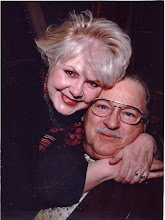Their industry shrinking, their projects on hold, their access to capital choked off, a subdued and sparse group of home builders gathered at San Francisco's Moscone Center this week for the annual PCBC show, formerly called the Pacific Coast Builders Conference.
"California's home building industry is in the worst shape ever," said Horace Hogan, chairman of the California Building Industry Association, the trade group that puts on PCBC, and president of Brehm Communities, a Carlsbad (San Diego County) home builder, speaking at a news conference. "Every builder I know has laid off most of their staff, and contractors and suppliers we've done business with for years have folded up shop."
The show reflected that contraction. At the peak of the housing boom in 2006, it drew 35,000 attendees. Last year there were about 19,000. This year only 14,000 people came to Moscone. Even with a smaller exhibit floor, the aisles were noticeably underpopulated. "It's like a ghost town," said Andy Mihaylo, president of the Christane Co., a Laguna Niguel (Orange County) firm that works in real estate financing.
Hogan had a variety of grim statistics to tick off. Although the 65,000 housing starts in California in 2008 were the lowest ever recorded, "As bad as last year was, right now 2009 looks like it might even be worse," he said, citing projections of only 40,000 housing units this year. That sluggish pace means the loss of more than 360,000 jobs and $50 billion from the state's economy, he said.
California's $10,000 tax credit for people who buy a new home is something the builders would dearly like to see extended. They say not only does it help their industry, but it generates state and local taxes, creates jobs and stimulates the economy.
Sam Chandan, president and chief economist of New York's Real Estate Econometrics, had more downbeat news at a session on the economic outlook, predicting a huge wave of defaults in commercial mortgages.
"About $300 billion in commercial mortgages will come due between now and the end of 2009, and the same in 2010," he said. "We lack the capacity to refinance them. This will lead to a significant increase in defaults and delinquency rates for commercial mortgages."
The dismal theme extended to conference sessions with titles like "Crisis of Confidence," "After the Downturn," "How to Support a Development Company When There Is No Development," and "So You Can't Flip It ... Now What?"
At a session on the capital markets called "Meet the Money," the moderator joked: "This isn't 'Meet the Money'; this is 'Need the Money.' "
On the show floor, the beautifully constructed booths hawking all manner of building supplies generally had more salespeople than prospective customers.
Wearing matching polo shirts, four hopeful salesmen were lined up in Century Shower Door's booth with little to do but arrange the abundant display of tchotchke giveaways.
"This used to be the kind of show where we'd have six or seven people in the booth and they would all be busy at once all the time," said Adam Slutske, owner of the Hayward company. "Now it's quiet, very quiet."
Many attendees said that same sense of mutedness extends to their own businesses.
"Until financing frees up and the market fires up, we can't do anything," said Ron Colton, senior vice president for Seastar Communities, a Sacramento home builder that he described as "not active at the moment."
Colton had his own way to characterize his new status.
"I'm a home not-builder," he said.
skip to main |
skip to sidebar

Mother, Father, Grandparents
.jpg)
Up to date information on real estate finances, properties for sale, how to get your home ready for sale, and other great tips.
June & Phil's Real Estate Corner
Mother, Father, Grandparents
Linked
http://www.linkedin.com/pub/june-thomas/13/73b/5ab
About Me
.jpg)
- Wildflower June
- I have 4 children, and many grand kids. I love scrapbooking, cooking with family and friends, painting Rousseau like canvas's, creating glass beaded works of art, collect frogs with crowns. I like to work with people selling property.
Disclaimer
The material placed on this Blog are my own and strictly my own. All articles not written by me will have the authors name attached. There is no warranty, implied or expressed in the contents of these pages. Read them at your own risk. The Blog is written for enjoyment to my clients, family, and friends and never intended to hurt, humiliate, or harm anybody or anything so help me God. Yes, and I do believe in God. Comments will be moderated.
Welcome
Welcome to our blog. We hope you enjoy the reports about finances, real estate updates, and properties for sale in our area.
